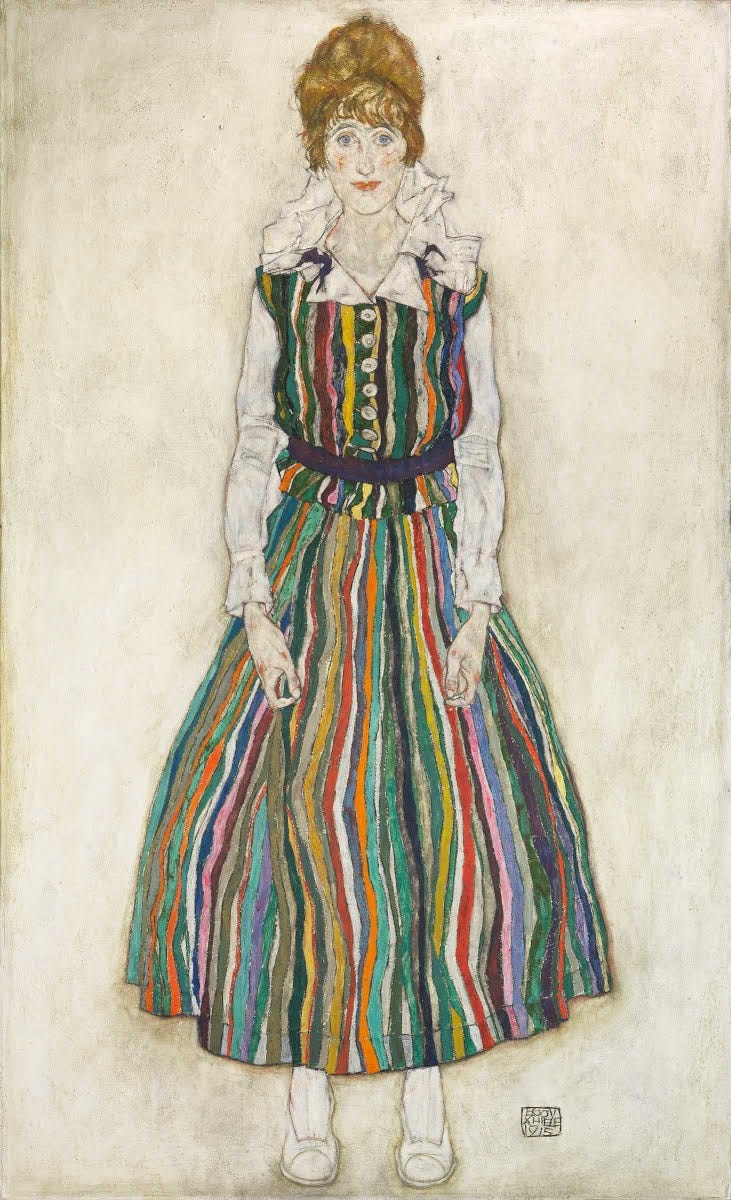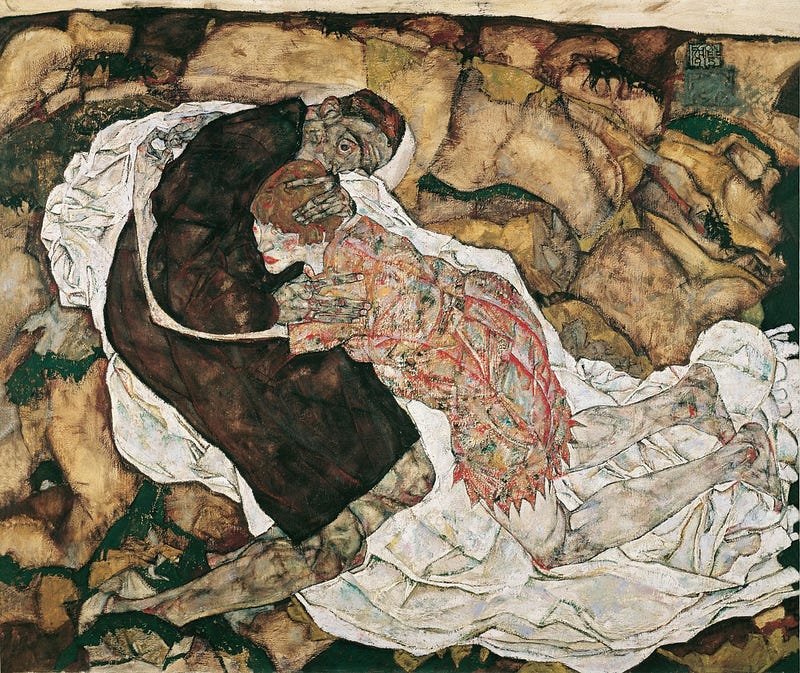By Lily Kuenzler
Sophie Haydock, associate director of Word Factory, is publishing her debut novel with Penguin Random House on March 16th. Her much anticipated novel, ‘The Flames’, tells the untold perspective of the artist Egon Schiele’s muses. Sophie tells Word Factory of how these muses paint their own portrait of the artist, and reclaim their stories in this arrestingly beautiful tale.
Q: How has your time as associate director of the Word Factory impacted you?
A: I worked with Cathy Galvin, founder of The Word Factory, at the Sunday Times magazine. I was there as work experience, and Cathy was deputy editor. I was in awe of Cathy. She founded the Sunday Times EFG short story award and I used to read all of the stories and help edit them. I remember editing a Ben Okri story, and querying the ending with him. It was so obnoxious looking back on it now, but I emailed Okri and he changed his story. I’d studied him at university, so that was a magical moment. Then Cathy left the Sunday Times and founded The Word Factory. I became her right-hand woman and that’s been pretty much the case for ten years. It’s amazing; there’s so many great things about Word Factory. It’s such an engaging community. To be amongst people who have the same mindset as you, who are reading, who are writing, who are failing, succeeding: all these things are so important when you’re learning the ropes. Word Factory has been pivotal to my career and my experience in London.
Q: As part of your role at Word Factory you ran the Short Story Club. What was your favourite one?
A: We’ve done so many great short story clubs! We’ve read people from Shirley Jackson, Ernest Hemingway, James Salter to Roald Dahl. Bookclubs can be overwhelming: I love reading but I don’t want to take on a book every month that somebody else has chosen for me. A short story is perfect. My favourite short story club might have been on James Baldwin’s Sonny’s Blues, which is transcendental in its writing and themes. Being able to dive so deeply into one author, and one of their works is a real treat. To have a discussion with like-minded people is a beautiful thing.
Q: You secured a very lucrative book deal for your debut novel ‘The Flames’ with Penguin and Random House, and it comes with much anticipation. How does that feel?
A: When you’re writing the book, you don’t know that it’s ever going to get published. You certainly don’t think it’s going to get a six-figure book deal, which is the stuff of dreams. I was overwhelmed and shocked and delighted when that happened. As an author, it’s definitely life-changing: you have to take yourself more seriously after that. You have to get on with the work of actually writing and stop making excuses.
Q: What drew you to Schiele as an artist?
A: I got an invitation to an exhibition at the Courtauld gallery, but I actually came so close to not going. I’m really glad that I did, because it was in the gallery that I first had the idea for the novel. I was taken by how powerful Schiele’s style was. It’s expressive, provocative, sensual, angst ridden. At the end of the exhibition, there was a line which said: Egon Schiele died aged 28. That knocked the breath out of me, because I wondered how he created so much incredible artwork in such a short time. It said that he had died three days after his wife, who was six months pregnant with their first child. I knew in that moment I wanted to tell Edith’s story, that this could be a great story. It was dynamic, compelling, tragic, full of sex, scandal, betrayal and heartbreak. I went home and did my research and discovered that Edith had a sister Adele. And Egon had a little sister Gertrude. And then there was Vally. I had these really exciting four women.

Q: To what extent are these stories fabricated or fact?
A: I definitely had the bones of the story and the narrative arc. I went away and did the research and found all these details, which would be impossible to make up: so many beautiful things happened to all four of the women and to Schiele himself. I had the historical facts and I breathed life into them. It’s easy to say Egon married Edith: that’s a historical fact. But how would it have felt for Vally to be betrayed in this way? How would it have felt for Adele if she had an expectation that she was going to marry first? So I was able to ask the questions that were more imaginative and place the women and their feelings right at the heart of the novel.
Q: How is depicting these women (without their input) as a writer, different to what Schiele was doing?
A: I didn’t change the narrative in the sense that their lives are still very much their lives and their histories are as wedded as can be to the facts. Any speculation that happened in the novel, for example that Adele might have been in love with her brother in law, is not a huge reach from what we have. We see her posing in her stockings for her sister’s husband, which is straightaway an unusual dynamic between the three of them. Adele said in an interview later in her life that she had an affair with Egon Schiele. It’s difficult because as a writer you want to honour these women’s lives. But you also want to create a novel that people feel engaged with and compelled by. I don’t feel that I’ve done these women any disservice. I don’t feel like I’ve strayed so far from the truth, or the potential truth, as to silence them in a way that would be disrespectful. Giving them a voice and putting them center stage allows these women to paint a portrait of themselves for the first time. Equally, to turn the canvas and paint a portrait of the artist. You get four different perspectives on him, and I like the idea that the four of them collectively are painting this portrait. That’s something that they hadn’t been given the chance to do before.
Q: What are the parallels between writing and painting? And what are the differences?
A: Obviously they’re both hugely creative acts. You have to find a ‘flow’ state to achieve transcendence: it doesn’t happen often, but it’s where the words flow through you. I think artists also have that, where they feel like they’re not painting, rather they’re the conduit for this creative process. Writing as well as painting is a very personal and intimate thing. Usually, you’re creating it alone. I really like doing things by myself: writing, running, all the things that don’t rely on other people. You create in a cocoon of anonymity. Schiele never knew that people were going to see his artwork, he certainly never knew that his drawings and paintings were going to be on Instagram. When I wrote the book, I hoped people would read it, but you never know. To be creative in any way is such an act of defiance. It’s incredible to do anything that takes you out of daily life.
Q: You mention Instagram, where you have an account called @egonschieleswomen which has 115k followers. How did that develop?
A: The idea of the Instagram account came after the exhibition. I was looking around for examples of his artwork and I realised that nobody at that point was putting his art on Instagram. It’s a great way of asking questions and getting people’s feedback: seeing what shocks people and what doesn’t, helping people understand who this artist was, and who the women in his life were and why they matter. It’s been a privilege to have that audience. Interestingly, Instagram have taken down some of my posts. A hundred years later, Schiele’s art is still too provocative, and it’s still being censored. This is art, this hangs in some of the best galleries in the world, and he is one of the greatest artists of the 20th century. So it’s a shame that Instagram can’t differentiate, but I’m not surprised. He was a very provocative painter, and he painted some really explicit poses for his woman and himself.
Q: What is your favourite work by Egon Schiele?
A: I always come back to ‘Death and the Maiden’ which is an oil painting Egon Schiele made in 1915 and it depicts him and Vally Neuzil. It shows the anguish of their separating. He’s about to marry another woman. Vally has been so loyal and stood by Schiele through his darkest days. And they have to split up. He makes the decision to do that, but it must have been painful for him. That’s how it is depicted in this painting — full of anguish. Anybody who’s been through heartbreak is going to be able to connect with this painting, because it’s so powerful. It’s very dark, there’s lots of black paint, and they’re clinging to each other for dear life. When you understand the story of what’s going on behind the scenes, it makes it even more poignant.

Q: If he was so sad to leave Vally, why do you think Schiele married Edith?
A: He was a product of time and place. He had a strange obsession with following in his parents’ footsteps; he got married on the same day that they did. He wanted to replicate the kind of life that his parents had, with its respectability and structure. He was 25 and he just had been released from prison — an incident which had shaken him. He probably just thought: this feels like the right time and a sensible step. In all honesty, he probably didn’t think his life was going to change. Maybe he would be able to continue his liaisons with Vally, maybe there would be other models. Life then for artists and men was was different. What was allowed by society, even if it was hidden away, was quite hypocritical. That’s a question at the heart of the book: did he love Vally? Did he love Edith? The other two big questions are: did he sleep with Adele? And do we think he slept with his sister? They’re provocative questions. I want this book to invoke discussion.
Q: There is a line, when Gertrude and Egon’s mother drops some precious bowls, where you write: “There are things in life that can never be replaced.” Is that, in some ways, the crux of the novel?
A: We all know what it is to lose people or things that we love. That sense that things will never be the same again, or that they can never be replaced is a universal human emotion. It’s a strong, poignant feeling, that things are only happening for one moment. Once they’re gone, they’re gone. You’ve got to embrace everything while you can. And live with the knowledge that it all goes. It all goes very fast.


